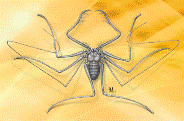Papers in the Biological Sciences

Eileen Hebets Publications
Document Type
Article
Date of this Version
2013
Citation
Ecology Letters (2013) 16: 964–974
Abstract
The contribution of sexual selection to diversification remains poorly understood after decades of research. This may be in part because studies have focused predominantly on the strength of sexual selection, which offers an incomplete view of selection regimes. By contrast, students of natural selection focus on environmental differences that help compare selection regimes across populations. To ask how this disparity in focus may affect the conclusions of evolutionary research, we relate the amount of diversification in mating displays to quantitative descriptions of the strength and the amount of divergence in mate preferences across a diverse set of case studies of mate choice. We find that display diversification is better explained by preference divergence rather than preference strength; the effect of the latter is more subtle, and is best revealed as an interaction with the former. Our findings cast the action of sexual selection (and selection in general) in a novel light: the strength of selection influences the rate of evolution, and how divergent selection is determines how much diversification can occur. Adopting this view will enhance tests of the relative role of natural and sexual selection in processes such as speciation.
Included in
Animal Sciences Commons, Behavior and Ethology Commons, Biology Commons, Entomology Commons, Genetics and Genomics Commons


Comments
Copyright (c) 2013 The Authors. Ecology Letters published by John Wiley & Sons Ltd/CNRS. This is an open access article under the terms of the Creative Commons Attribution-NonCommercial License